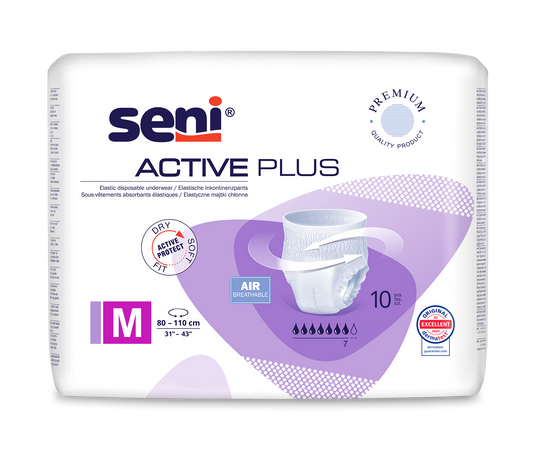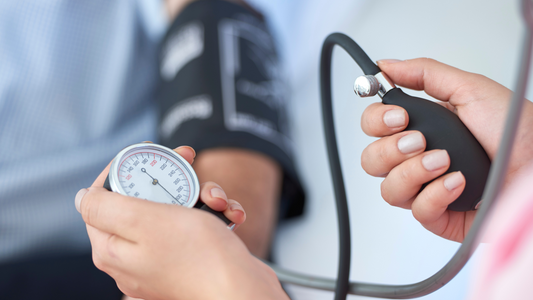
From red wine to cholesterol: the 10 largest heart myths under the magnifying glass
In a world in which information is spread faster than ever, false facts and myths about our health are omnipresent - and the heart is not spared. Hardly any topic is through misinformation and fake news as heart diseases. From alleged miracle remedies to false ideas about cholesterol and lifestyle - many of these myths can not only mislead, but in the worst case even be life -threatening. While every third in Germany dies of cardiovascular disease, it is terrifying how often dangerous half-truths increase the risk instead of reducing it. It is time to take a close look at the greatest myths over the heart and to clarify with scientific facts what is really true - because only with the right information can the heart be protected effectively.

Myth: a glass of red wine per day is good for the heart
Positive effects of red wine on heart health in moderate consumption
-
Red wine and heart health: Current studies show that moderate red wine consumption (up to one glass per day) may have positive effects on heart health. In particular Resveratrol and other polyphenols In the red wine, they seem to have a protective effect on the cardiovascular system by exerting antioxidant and anti-inflammatory effects.
Negative effects of alcohol on the heart with excessive consumption
-
Increased risk of cardiac arrhythmia: Current studies show that even less to moderate alcohol consumption can increase the risk of atrial fibrillation. People with existing cardiac arrhythmias should avoid alcohol as possible.
-
Alcohol and high blood pressure: Systematic review has shown that alcohol consumption in all quantities is associated with increased blood pressure and thus a higher risk of cardiovascular diseases. This is particularly questionable for people with already high blood pressure.

Effects of alcohol on existing heart disease
-
Heart failure: In people with heart failure, alcohol consumption can lead to a deterioration in the disease. Even moderate consumption can affect the heart function, and an alcohol -free lifestyle is strongly recommended in patients with heart failure.
-
Coronary heart disease (KHK): In the case of existing KHK, alcohol consumption is a risk factor for sudden heart events such as heart attack. A current study shows that the consumption of alcohol in KHK patients should be monitored closely, and in many cases complete abstinence can make sense.
-
Heart diseases risks: In people with existing heart diseases such as heart failure, atrial fibrillation, or KHK, even low alcohol consumption can increase the risk of further complications. The recommendation is therefore often to avoid alcohol or to restrict them heavily.

Myth: cholesterol is always bad for the heart
Myth: Heart diseases only affect older people
The myth that heart diseases only affect older people is widespread, but not medically not correct. Heart diseases can affect people of all ages, even if the risk increases with age. Here are some scientifically sound reasons why heart diseases not only affect older people:

Lifestyle factors play a major role
Unhealthy habits that are often developed at a young age increase the risk of heart diseases. This includes:
- Unhealthy diet: A diet with a high content of saturated fats, sugar and salt can lead to arteriosclerosis (narrowing of the arteries) at a young age, which increases the risk of heart attacks and strokes.
- Lack of exercise: Physical inactivity contributes to obesity, high blood pressure and increased cholesterol - all risk factors for heart disease.
- Smoke: Young people who start smoking early expose themselves to a significantly higher risk of heart disease, since nicotine and other harmful substances damage the cardiovascular system.
Increasing prevalence of overweight and diabetes in young people
Obesity and type 2 diabetes are increasingly also occurring in younger people. Both diseases are closely linked to the risk of heart diseases:
- obesity leads to high blood pressure, high cholesterol and insulin resistance that strain the heart and increase the risk of heart diseases.
- diabetes Damage the blood vessels and the heart, which can lead to heart attacks or strokes at a young age.
Genetic factors
Heart diseases can also be genetic and affect young people, even if they lead a healthy lifestyle. The genetic risk factors include:
- Family hypercholesterolemia: A genetic disorder that leads to extremely high cholesterol levels can lead to arteriosclerosis and heart attacks at a young age.
- Congenital heart defect: Some people are born with heart defects who can lead to serious heart problems in the course of life.
Stress and mental health
Chronic stress, which is also increasing in younger people these days, can increase the risk of heart diseases. Stress can cause high blood pressure and promote unhealthy behaviors such as excessive alcohol consumption, smoking or unhealthy nutrition that strain the cardiovascular system.
Heart diseases in young athletes
Apparently healthy young people, especially athletes, can also be affected by heart diseases. Some diseases like Hypertrophic cardiomyopathy (Thickening of the heart muscle) or Arrhythmia can lead to heart failure without warning, especially under physical stress.

Myth: Men are more affected by heart diseases than women
The myth that men are more affected by heart diseases than women is widespread, but misleading. In fact, both men and women are affected by heart diseases, but with different forms and risk profiles. The assumption that heart diseases are primarily a "male problem" can lead to the risk of being underestimated in women - which can have serious consequences. Here are some medical facts that refute this myth:
Heart diseases are the most common cause of death in women
Heart diseases are one of the most common causes of death in women worldwide, as well as in men. Studies show that cardiovascular diseases in women lead to death more often than, for example, breast cancer. The assumption that women are less affected leads to the risk of being underestimated - both by those affected and by doctors.
Different symptoms in women and men
Heart diseases often express themselves differently in women than men. While men often have classic symptoms such as strong breast pain (angina pectoris), women often suffer from less specific symptoms such as:
- shortness of breath
- Nausea or vomiting
- Back pain or pain in the jaw
- Exhaustion and feeling of weakness
These differences in symptoms often lead to heart diseases in women later recognized or even overlooked. Delayed recognition can increase the risk of serious complications, including heart attack and death.
Protection by hormones - but only up to a certain age
Before menopause, women have a lower risk of heart diseases than men due to the protective influence of estrogen. Estrogen helps to regulate cholesterol levels and keep the blood vessels flexible. After menopause, however, this protection drops rapidly, and the risk of heart diseases increases significantly in women, partly to the same or even higher level than in men.
Risk factors work differently in women
Certain risk factors such as Hypertension, diabetes and Smoke often have more serious effects on heart health in women than in men. For example, diabetes increases the risk of coronary heart diseases in women more than in men. In addition, women are more susceptible to stress and depression, which further increases their risk of heart diseases.
Underestimated danger: microangiopathy
Women suffer more often than men from a special form of coronary heart disease, which are Microangiopathy is known. It is not the large coronary arteries, but the small blood vessels are affected. This form of heart disease is often diagnosed more heavily because it is not always recognized in standard examinations such as coronary angiography.
Later treatment of women in women
Women tend to ignore their symptoms longer and to take medical help later than men. This can lead to not treated in time for heart attacks or other acute heart problems. There are also indications that women are sometimes treated less aggressively in the diagnosis and treatment of heart diseases than men.

Myth: A heart attack is always accompanied by strong chest pain
-
The myth that a heart attack is always accompanied by strong chest pain is widespread, but misleading. While chest pain is a frequent symptom of a heart attack, heart attacks do not always show up in this way. The symptoms can be different or less typical, especially in women, older people and diabetics. Here are the reasons why this myth does not apply:
Atypical symptoms of a heart attack
-
Not every heart attack manifests itself through the classic, strong chest pain. Instead, many people, especially women and older people, have so -called "atypical" symptoms that can easily be overlooked or misinterpreted. These can include:
- shortness of breath: Many affected people complain about shortness of breath without the mandatory breast pain.
- Nausea and vomiting: These symptoms are often not associated with a heart attack, especially in women.
- Weakness or extreme fatigue: Some people report a sudden, inexplicable exhaustion that occurs for no obvious reason.
- Pain in other areas of the body: Heart attacks can cause pain in the back, neck, jaw or in the arms without the breast being affected directly.
"Silent heart attack"
- In some cases, a heart attack can even remain completely unnoticed. This so -called "Silent heart attack" often occurs without the typical symptoms and is often only discovered in later medical examinations, for example at an EKG. Such infarcts occur more often in older people and diabetics because their sensation of pain can be affected.
Differences in women and men
Women often experience different symptoms in a heart attack than men. While men often have the classic, intensive chest pain, women complain more about non -specific symptoms such as:
- Feeling of pressure or tightness in the chestthat is not necessarily perceived as pain
- Pain in the upper abdomenthat can be misinterpreted as digestive problems
- Dizziness or sudden nausea
These differences often mean that heart attacks in women later recognize or misinterpret what their treatment can delay.

Myth: If you have heart problems, you should be careful and not train
Sports and physical activity play a central role in the prevention and treatment of heart diseases. Regular movement not only improves heart health, but can also help to slow down existing heart disease and increase the quality of life.Sport with existing heart disease
Even with existing heart disease, physical activity - if under medical supervision - can be safe and effective. Especially in patients with stable heart failure or after a heart attack, movement contributes to strengthening the heart. The advantages are:
- Improved heart function: The heart becomes more efficient, which leads to an improvement in endurance and performance.
- Strengthening the heart muscle: A stronger heart muscle can better pump and thus supply the body more effectively with oxygen.
- Better oxygen absorption: The body is better supplied with oxygen, which increases resilience.
Recommended sports
For people with heart disease, moderate endurance activities such as Go, cycle, swim or Light aerobics ideal. These sports strengthen the heart without overloading it. Strength training in moderate intensity can also be advantageous to strengthen the muscles and improve physical resilience.
Important precautions
Although sport is advantageous for many people with heart disease, they should always be clarified by a doctor before starting a training program. Some important precautions:
- Note the warning sign: In the case of symptoms such as chest pain, shortness of breath, dizziness or irregular heartbeat, the training should be stopped immediately and a doctor should be consulted.
- Regular checks: People with heart disease should have regular medical examinations carried out to ensure that their training program remains safe and effective.
- Overload of the heart: Intensive physical exertion can lead to an overload of the heart muscle in people with heart disease. This can trigger dangerous complications such as cardiac arrhythmias, heart attacks or rinn sudden heart death. Especially in patients who suffer from unstable angina pectoris or advanced heart failure (cf. Nyha scale), intensive stress is a risk.
- Insufficient adaptation of the training: Scientific studies show that the training program must be individually adapted to cardiac patients. A "unit size" does not work here because the resilience from patient to patient varies. Especially with heart failure, depending on the Nyha stage, the training must be very differentiated and monitored by a doctor.
- Danger with inadequate warm -up phase: Studies have shown that a sudden start of intensive activities without adequate warm -up phase additionally burdens the heart. A slow and gradual introduction to physical activity is crucial in order not to overwhelm the cardiovascular system.

Myth: low -fat diets are the best prevention against heart diseases
-
The myth that Low -fat diets the best prevention against heart diseases are increasingly refuted in recent years. In the past, it was often recommended to generally reduce fats to reduce the risk of heart disease. But modern research shows that the type of fat is more important than the amount.
Good fat vs. bad fat:
- Unsaturated fatthat occur in nuts, seeds, avocados, olive oil and fat fish are good for the heart. You can lower LDL cholesterol (bad cholesterol) and increase the HDL level (good cholesterol), which reduces the risk of heart disease.
- Saturated fat and Trans fat, as they occur in processed foods, fried food and greasy meat varieties, increase the risk of cardiovascular diseases. These fats can increase the LDL cholesterol level and promote inflammation.
Low -fat diets are not always heart healthy:
Studies have shown that low -fat diets often lead to a higher consumption of carbohydrates, in particular from refined carbohydrates such as sugar and white flour. These carbohydrates can increase blood sugar levels and lead to insulin resistance, which increases the risk of heart diseases and type 2 diabetes(
Mediterranean nutrition as a model:
The Mediterranean diet, which is rich in unsaturated fats from olive oil, nuts and fish, is now considered one of the healthiest diets to prevent heart diseases. This diet has shown in studies that it can significantly reduce heart diseases, strokes and mortality as a whole

Myth: low blood pressure is always healthy
Contrary to the myth, low blood pressure is not always healthy or effective, but rather a health burden. It becomes particularly problematic when a serious illness goes hand in hand with it. In order to know your blood pressure and its course, we recommend our own Blood pressure device to own. In addition, it is recommended to do the heart rate by means of a doctor using EKG to be monitored in order to be able to identify cardiac diseases at an early stage.
Dizziness and fainting: If blood pressure is too low, there is no enough blood into the brain, which can lead to dizziness, drowsiness or even fainting. This often occurs when getting up quickly (orthostatic hypotension) or sudden changes in positions.
- Exhaustion and weakness: The muscles and organs may not get enough oxygen, which leads to tiredness, exhaustion and a general feeling of weakness. The heart also often has to work harder to circulate the blood in the body.
- Calateness and pallor: The peripheral blood circulation, i.e. the blood circulation in the outer parts of the body such as hands and feet, can be restricted at low blood pressure, which leads to cold limbs and pale skin.
- Visual disturbances: Due to the reduced blood supply to the brain, symptoms such as blurred people can see, "stars" or "black and black" in front of the eyes.

Myth: Only overweight people have a high heart risk
- Even slim people can have a high risk of heart disease, especially if they have other risk factors such as smoking, high blood pressure or high cholesterol levels.
Opinion on the myth: "Only overweight suffering in heart disease"
This myth is incorrect And misleading. Although overweight is a known risk factor for heart disease, people with normal or even low body weight are not automatically protected against heart disease.
Cardiovascular risk factors regardless of the weight
There are several risk factors that can cause heart diseases, regardless of the body weight:
-
Genetic predisposition: Family history and genetic factors play an important role in heart diseases. Despite normal weight, one person can have an increased risk if heart diseases occur in the family.
-
Cholesterol and high blood pressure: People with normal weight can still have high LDL cholesterol levels ("bad cholesterol") or high blood pressure, both essential risk factors for heart disease.
-
Smoke: Smoking damages the blood vessels and increases the risk of atherosclerosis and heart attacks, regardless of body weight.
-
diabetes: Diabetes significantly increases the risk of heart disease, and there are many normal -weight people suffering from type 2 diabetes.
-
Stress and lack of exercise: A stressful lifestyle and lack of exercise can lead to heart problems regardless of weight.
"Metabolically Obese Normal Weight" (Monw)
There is the term "Metabolicly Obese Normal Weight" (Monw), which describes people who have a normal body weight, but still have risk factors for heart diseases, such as: B. insulin resistance, high blood pressure, high triglyceride values and low HDL cholesterol.
These people have an increased risk of cardiovascular diseases, even though they appear slim on the outside.
Possible heart diseases in normal weight
- Atrial fibrillation: Normal -weighted people are also susceptible to cardiac arrhythmias such as atrial fibrillation.
- Heart attack: Studies show that up to 25% of heart attacks occur in people with normal BMI.
Heart diseases are the result of a interaction of several factors, including genetics, lifestyle, blood pressure, cholesterol, diabetes and smoking. While overweight increases the risk, normal -weighted people are not protected against heart diseases. Therefore, it is important to regularly check blood pressure, cholesterol and blood sugar and lead a healthy lifestyle, regardless of the body weight.

Myth: Heart diseases are inevitable when they are in the family
The myth that heart diseases are inevitable when they are in the family is widespread, but not medically not correct. The genetic predisposition plays a role in the development of heart disease, but many other factors also influence the individual risk. Here are the most important reasons why this myth is wrong
Genetics is only part of the puzzle
- Genetic predisposition can increase the risk of certain heart diseases such as coronary heart disease or heart attack. However, genetics alone do not determine fate. Factors such as lifestyle, nutrition and movement have a significant impact on whether a genetic predisposition is actually manifested in an illness.
Modifiable risk factors
Many risk factors for heart disease can be changed. This includes:
- Hypertension: The blood pressure can often be reduced through lifestyle changes such as movement, healthy eating and stress management.
- High cholesterol levels: A balanced diet and medication such as statins can control cholesterol levels.
- Smoke: The absence of smoking significantly reduces the risk.
- diabetes: Weight management, healthy eating and physical activity can be kept under control or even prevented.
- Lack of exercise: Regular movement strengthens the heart and significantly reduces the risk of heart diseases.
Epigenetics and environmental influences
Science shows that lifestyle factors and environmental influences can have an epigenetic effect. This means that they influence how genes are switched on or off. A healthy lifestyle can therefore influence the activity of genes that increase the risk of heart diseases.
Early detection and prevention
Modern medical techniques make it possible to recognize risk factors at an early stage. Regular health checks can help treat problems such as high blood pressure or high cholesterol levels in good time. With suitable measures, people with a family preload can also significantly reduce their risk.
Psychosocial factors
Stress, lack of sleep and emotional stress can also contribute to heart diseases. By consciously concerning these factors, for example through stress management or a healthy work-life balance, the risk can be further minimized.
































